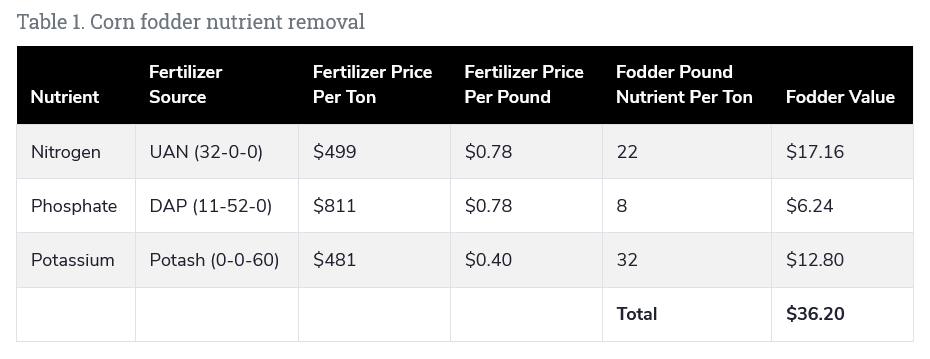By Heidi Reed and Tara Felix
There are three main strategies to manage fodder (also called stover or residue) after corn grain harvest: keep it in the field, bale it, or graze it.
Keeping Fodder in the Field
One of the benefits of keeping corn fodder in the field is soil conservation. The NRCS recommends keeping soils covered as much as possible for improved soil health. High levels of soil cover and roughness reduce soil loss according to RUSLE2, a tool used by NRCS to estimate erosion potential. Corn fodder left on the soil surface after grain harvest can easily provide 90 to 95% cover; additionally, the remaining standing cornstalks increase field roughness. Conversely, removing fodder through baling or grazing can reduce cover by 25 to 80% depending on the method used (chopping, raking, and baling vs. baling combine wind rows only vs. strip grazing, etc.), leaving the soil more vulnerable to erosion, especially on sloping ground.
We know that soil conservation does not just help the environment—it also makes financial sense. Iowa State University Extension summarized in a 2012 factsheet that soil erosion can cost farmers more than $20 per acre (adjusted for inflation) per year. This estimate accounts for a number of factors, including nutrients in the soil that are unavailable to the next crop, resulting in increased fertilizer costs; reduced crop yield when topsoil moves and poorer soil remains as substrate for crop growth; loss of land value; potential damage to property and roads; and water body impairment from moving soil.
Beyond keeping soil and soil-bound nutrients in place via erosion protection, maintaining corn fodder in the field allows nutrients tied up in leaves, stalks, and cobs to become available to subsequent crops as the residue breaks down. It is important to consider the value of these nutrients and their cost of replacement when deciding how to manage fodder. Corn fodder dry matter yield is approximately the same as corn grain yield—so, for 150 bu/A corn, we estimate approximately 3.5 tons of dry fodder (150 bu/A x 56 lb/bu x 84.5% DM / 2,000 lbs/Ton).
Table 1 shows the approximate nutrient content of corn fodder per dry ton (based on calculations by Michigan State University Extension). Current national average prices are listed in the table—these are for demonstration purposes only. You should use your own local prices for your calculations, as fertilizer prices vary widely depending on the time of year, location, and volume purchased.

Source : osu.edu